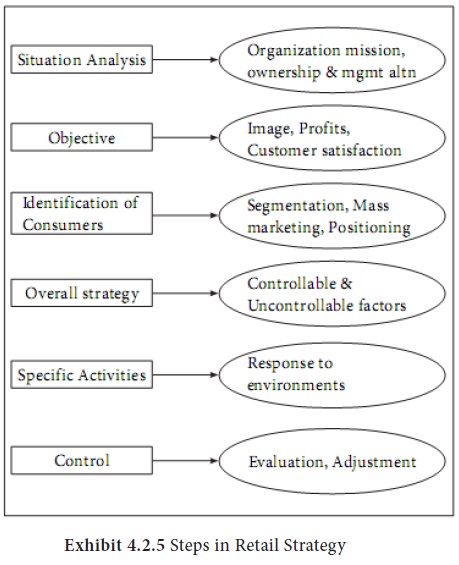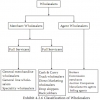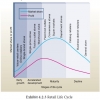MARKETING MANAGEMENT - Retailers And Wholesalers
Elements Of Retail Strategy - Retailers And Wholesalers
Posted On :
The retail strategy is an overall plan and guidelines that guides a retailer.
Elements Of Retail Strategy
The retail strategy is an overall plan and guidelines that guides a retailer. A retail strategy is a clear and well-defined plan that the retail organizations outline to tap the market and create a long-term relationship with the customers. The steps that are involved in strategy formulation are the same in every industry. Exhibit 4.2.5 brings out the steps in retail strategy.

The first stage in retail strategy is establish the organizational mission. A mission statement acts as a motivator for the organization. The mission statement is one, which inspires the employees in the organization to stay focus on the goals of the organization. Evaluating ownership and management options like whether to go it alone or have a partnership or to buy an already existing organization has to be clearly outlined. Apart from this the merchandise that would be sold should also be evaluated.
These are the long, short and the mid term goals the retailer hopes to attain. The goals may be based on profits that may include ROI, sales which include market share, and the customer and the stakeholders’ satisfaction. Te objectives need to be well defined keeping in mind the mission of the organization and should see that the strategies get translated into results.
Even though the strategy of a particular retailer may be executable and the mission of the organization looks inspiring, but if a wrong target market is chosen, it may prove a failure. It is essential for the retailer to understand the needs of the customer. A retailer has three options which he may choose according to his objective, he can try selling different product categories to a broad spectrum of customers which is known as mass marketing or work on one particular segment which is market segment or have two or more segments which is commonly called as selective segments.
The overall strategy is broadly classified into controllable and uncontrollable factors. The location of the store, merchandise decision, communication, objectives come under controllable factor since the firms has a element of autonomy n deciding about them. In case of uncontrollable factors, the factors that a retailer must try and adapt like the technological changes, legal imperatives, cultural factors, economic situation get categorized. This step is one of the most essential steps in retail strategy because this stage demonstrates the firm’s ability to adapt to different changing conditions.
This deals with the tactical decisions and the day-to-day operations of the firm. The firm’s responsiveness to the environmental factors with the help of the marketing mix elements is the actual functioning of the firm’s activities.
In the final phase of strategy formulation is the review of the firm’s performance of a period of time. The firm’s strategies and the tactics have to be evaluated to find the effectiveness and if it fall in place wit the organizational objectives and the with the firm’s mission. In case if the firm finds that some of the tactics are time consuming and not much of benefit could be figured out the organization should ensure that such tactics have to be modified or be dropped from the firm’s future course of action.
The retail strategy is an overall plan and guidelines that guides a retailer. A retail strategy is a clear and well-defined plan that the retail organizations outline to tap the market and create a long-term relationship with the customers. The steps that are involved in strategy formulation are the same in every industry. Exhibit 4.2.5 brings out the steps in retail strategy.

Situation Analysis
The first stage in retail strategy is establish the organizational mission. A mission statement acts as a motivator for the organization. The mission statement is one, which inspires the employees in the organization to stay focus on the goals of the organization. Evaluating ownership and management options like whether to go it alone or have a partnership or to buy an already existing organization has to be clearly outlined. Apart from this the merchandise that would be sold should also be evaluated.
Objectives
These are the long, short and the mid term goals the retailer hopes to attain. The goals may be based on profits that may include ROI, sales which include market share, and the customer and the stakeholders’ satisfaction. Te objectives need to be well defined keeping in mind the mission of the organization and should see that the strategies get translated into results.
Identification of customers
Even though the strategy of a particular retailer may be executable and the mission of the organization looks inspiring, but if a wrong target market is chosen, it may prove a failure. It is essential for the retailer to understand the needs of the customer. A retailer has three options which he may choose according to his objective, he can try selling different product categories to a broad spectrum of customers which is known as mass marketing or work on one particular segment which is market segment or have two or more segments which is commonly called as selective segments.
Overall Strategy
The overall strategy is broadly classified into controllable and uncontrollable factors. The location of the store, merchandise decision, communication, objectives come under controllable factor since the firms has a element of autonomy n deciding about them. In case of uncontrollable factors, the factors that a retailer must try and adapt like the technological changes, legal imperatives, cultural factors, economic situation get categorized. This step is one of the most essential steps in retail strategy because this stage demonstrates the firm’s ability to adapt to different changing conditions.
Specific Activities
This deals with the tactical decisions and the day-to-day operations of the firm. The firm’s responsiveness to the environmental factors with the help of the marketing mix elements is the actual functioning of the firm’s activities.
Control
In the final phase of strategy formulation is the review of the firm’s performance of a period of time. The firm’s strategies and the tactics have to be evaluated to find the effectiveness and if it fall in place wit the organizational objectives and the with the firm’s mission. In case if the firm finds that some of the tactics are time consuming and not much of benefit could be figured out the organization should ensure that such tactics have to be modified or be dropped from the firm’s future course of action.
Tags : MARKETING MANAGEMENT - Retailers And Wholesalers
Last 30 days 3584 views















